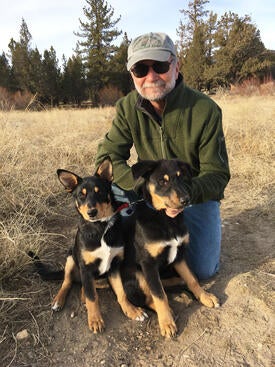Entomology Professor John Heraty’s work on a group of extremely small wasps that parasitize ants has led him to more than 20 countries around the world. Now, it has also helped cement his election as a fellow of the Entomological Society of America (ESA).
“It is truly an honor to be elected, and to have earned such amazing respect from my colleagues,” Heraty said.
Heraty is especially interested in wasps from the superfamily Chalcidoidea. With an estimated 500,000 species, this group contains important members used to control agricultural pests. Some of his research on them is detailed in a new book based on the work of 55 collaborators from around the world, titled “Chalcidoidea of the World.”
Within this larger group of wasps, he is particularly interested in Eucharitidae, the ant parasites he has dubbed, “the scientific love of my life.”
“Why has no one ever heard of these wasps? In all likelihood, it has to do with their size. Most are less than 2 millimeters and some as small as 0.14 mm,” Heraty said. “We are surrounded by them, but we never notice them as they seek out and kill the unwanted pests that we have in our gardens.”
Heraty feels that in general, the type of work he does — classifying, naming, and developing evolutionary histories for insects, a field called systematics — is often overlooked. “An ESA fellow award highlights the importance and promotion of this scientific discipline,” he said.
It is not only his work on wasps that earned his election. Fellows are recognized for outstanding contributions to the field through teaching, extension, public engagement, and science policy, in addition to research.
Some of Heraty’s other contributions to the entomological community include being a major advisor to many doctoral and master’s students as well as postdoctoral researchers and undergraduates.
Hailing from Toronto, Canada, Heraty earned his doctorate at Texas A&M University and held postdoctoral fellowships at Carleton University and the Canadian National Collection in Ottawa. He went on to a fellowship at the Smithsonian Institution before coming to UCR in 1995 and became a full professor in 2005.
He is proud of the diversity of students supported in his laboratory, with a large number being women, Hispanic, African American, and Native American. He has raised funds for the ESA’s SysEB Graduate Student Travel Award and initiated an undergraduate research experience endowment for entomology at UCR.
The ESA is the largest organization in the world serving entomologists and individuals in related disciplines. Founded in 1889, it has nearly 7,000 members affiliated with educational institutions, health agencies, private industry, and government.
This year’s class of nine new fellows will be recognized during a November ceremony in Portland, Oregon.
